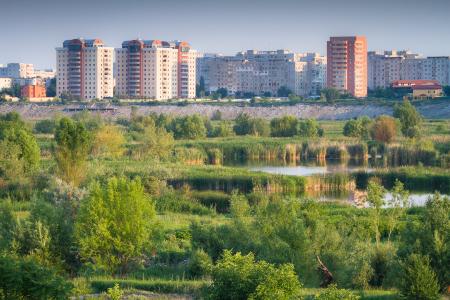
Area characterisation:
The area used to be a village (including an Orthodox monastery) before the Communist dictator Nicolae Ceausescu decided to turn it into a lake. The structure had some leakages and was never filled with water. Currently, it is a wetland; natural springs are the source of water.
Objective:
None
Potential impacts/benefits:
Green space management (including enhancing/ conserving urban biodiversity
- Increase accessibility to green open spaces.
- Changing the image of the urban environment.
- Increase awareness of NbS solution & their effectiveness and co-benefits. Increase Biodiversity.
- Increase the quality and quantity of green and blue infrastructures.
- Improve connectivity and functionality of green and blue infrastructures.
- Increase achievements of biodiversity targets.
- Increased cultural richness and biodiversity.
- Carbon sequestration and storage.
Actions:
Nature colonized gradually a void area turning it into a wetland. An association (NGO) managed to convince the national authority (Ministry of the Environment) to declare it a protected area, called in the Romanian legislation “Natural Park” (IUCN, V), the only one in Bucharest.
Transferability of result:
Depends on the national legislation on protected areas and the way they can be established.
Lessons learnt:
“Nature finds a way.”
Organisations:
The Association “Vacaresti Nature Park” (responsible for convincing the authorities to declare its protection status)
Contacts:
A_Petrisor (ThinkNature user name)
Publications and reports:
https://www.theguardian.com/cities/2016/jun/14/nature-europe-urban-protected-area-vacaresti-nature-park-romania
http://parcnaturalvacaresti.ro/ (official website)